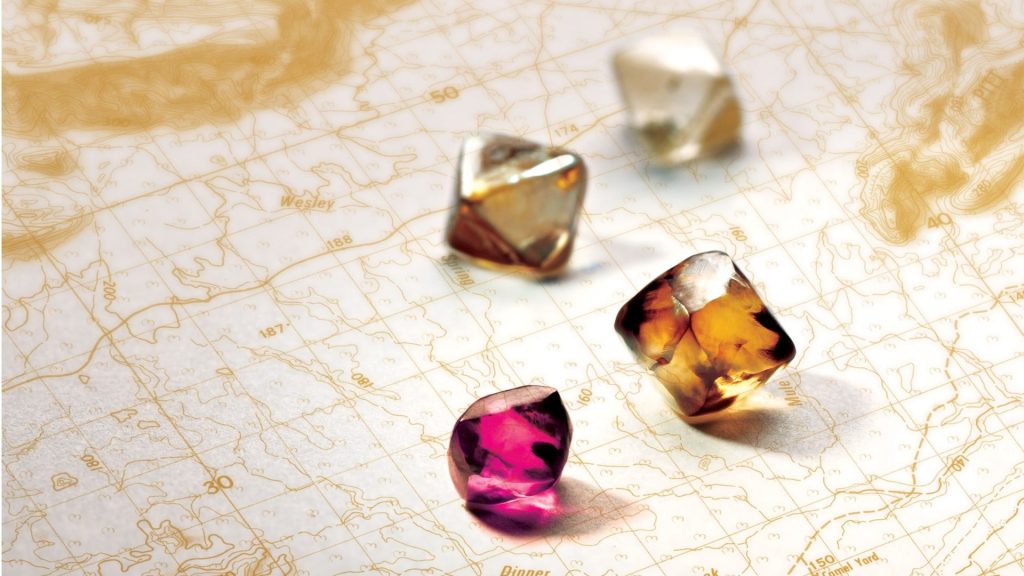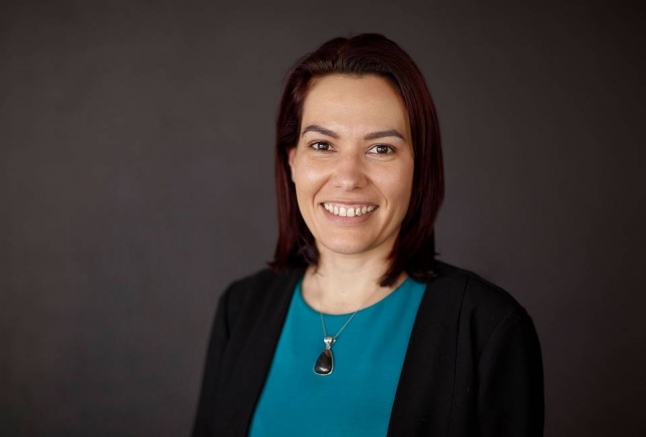Geologists found alluvial diamonds in the East Kimberly region in the 1970s. The traditional owners of the land have known about them for time out of mind.

The Argyle Diamond Mine lease sits on the traditional lands of the Miriuwung, Gidja, Malgnin and Wularr people and is criss-crossed by
Dreaming tracks and places of cultural significance. While there is no single Dreaming that is accepted by all Aboriginal peoples as the ‘creation story’, there are many knowledges that are common between groups. Barramundi Dreaming is one such story. It goes like this:
A giant barramundi moved through the landscape in the creation time. Once, she was injured by a crane and some of her scales were loosened. The barramundi escaped by swimming up the Dunham river where she scraped some of her scales on the rocks. Three women attempted to catch the barramundi using nets made of rolled spinifex grass, but the barramundi jumped the trap, leaping between the two hills of Barramundi Gap. Her rainbow scales fell to the earth as she jumped, becoming the alluvial diamonds found in the landscape.
This is where the open pit at the Argyle Diamond Mine is now. Barramundi Gap is one of the most culturally significant sites belonging to the Miriuwung and Gidja people and is considered Women’s Business, so it is fitting that two of the most prominent people involved in negotiating the rehabilitation of the mine and its return to traditional owners are women.
Barramundi Gap is one of the most culturally significant sites belonging to the Miriuwung and Gidja people and is considered Women’s Business, so it is fitting that two of the most prominent people involved in negotiating the rehabilitation of the mine and its return to traditional owners are women.

1/2 Kia Dowell
Kia Dowell is Gidja from Warmun community in East Kimberly and worked for Rio Tinto in cultural relations after getting her MBA. Her parents met
whilst working at Argyle in the early days of the mine and her grandmother suggested that she get a job with the mining company to understand how it thinks. Now, she sits on one side of the negotiating table advocating for the traditional owners.
On the other side is Sinead Kaufman, chief executive of minerals, and in charge of Rio Tinto’s global diamond business. After the destruction of the
Juukan Gorge, Sinead insists the mining company is determined to prove it can do the right thing for the traditional owners and the land. End-of-mine plans are currently before the WA government.
But while rehabilitation work has already commenced at the site, Kia says talks are still ongoing. With the land due to be handed back by 2035, there are many who feel that is too soon. The mine was in operation for 37 years and a similar amount of time should be devoted to ensuring the landworks there don’t become an environmental risk for future generations.

2/2 Sinead Kaufman
Argyle says it will take three to five years to dismantle the operational infrastructure, reshape the land and undertake revegetation activities to enable the re-establishment of a natural ecosystem. Argyle continues to employ people post-mining to work on rehabilitation and monitoring, continuing to pay wages and contributing to the local economy.
In 2021, the first Argyle Rangers completed their Conservation and Land Management traineeship. This programme was developed to upskill traditional owners on various land management, community and cultural activities that will be undertaken during the closure execution phase, and post-closure monitoring and maintenance phase. The mining company’s focus is to support traditional owners to ultimately lead the important environmental monitoring and maintenance work required on site.
Read below for related stories: